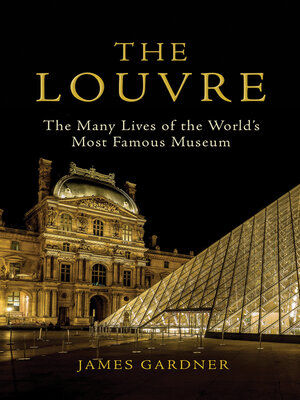
Sign up to save your library
With an OverDrive account, you can save your favorite libraries for at-a-glance information about availability. Find out more about OverDrive accounts.
Find this title in Libby, the library reading app by OverDrive.



Search for a digital library with this title
Title found at these libraries:
| Loading... |
The centuries-long history of the Louvre, from humble fortress to Royal palace to the world's greatest art museum—with photos and building maps.
Some ten million people from all over the world flock to the Louvre each year to enjoy its incomparable art collection. Yet few of them are aware of the remarkable history of the site and buildings themselves—a fascinating story that historian James Gardner elegantly chronicles in this authoritative history.
More than seven thousand years ago, men and women camped on a spot called le Louvre for reasons unknown. Centuries later, King Philippe Auguste of France constructed a fortress there, just outside the walls of a nascent Paris. Intended to protect the capital against English soldiers stationed in Normandy, the fortress became a royal residence under Charles V two centuries later, and then the monarchy's principal residence under the great Renaissance king François I.
In 1682, when Louis XIV moved his court to Versailles, the Louvre languished until the French Revolution when, during the Reign of Terror in 1793, it first opened its doors to display the nation's treasures. Ever since—through the Napoleonic era, the Commune, two World Wars, to the present—the Louvre has been a witness to French history, and expanded to become home to a legendary art collection that includes the Mona Lisa and Venus de Milo.
Includes sixteen pages of full-color photos illustrating the history of the Louvre, a full-color map detailing its evolution from fortress to museum, and black-and-white images throughout the narrative.
Some ten million people from all over the world flock to the Louvre each year to enjoy its incomparable art collection. Yet few of them are aware of the remarkable history of the site and buildings themselves—a fascinating story that historian James Gardner elegantly chronicles in this authoritative history.
More than seven thousand years ago, men and women camped on a spot called le Louvre for reasons unknown. Centuries later, King Philippe Auguste of France constructed a fortress there, just outside the walls of a nascent Paris. Intended to protect the capital against English soldiers stationed in Normandy, the fortress became a royal residence under Charles V two centuries later, and then the monarchy's principal residence under the great Renaissance king François I.
In 1682, when Louis XIV moved his court to Versailles, the Louvre languished until the French Revolution when, during the Reign of Terror in 1793, it first opened its doors to display the nation's treasures. Ever since—through the Napoleonic era, the Commune, two World Wars, to the present—the Louvre has been a witness to French history, and expanded to become home to a legendary art collection that includes the Mona Lisa and Venus de Milo.
Includes sixteen pages of full-color photos illustrating the history of the Louvre, a full-color map detailing its evolution from fortress to museum, and black-and-white images throughout the narrative.






